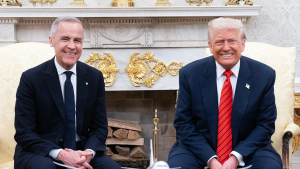An Inuit cultural research centre is going to great lengths to develop a 750-square-foot modular community building, which is a net zero pilot for energy/durability performance and a stepping stone to the design of a large community centre in Cambridge Bay, Nunavut, north of the Arctic Circle.
“We’re trying to create a really broad systemic approach to green,” says Brendan Griebel, manager, collections and archives of the centre, which is operated by the Pitquhirnikkut Ilihautiniq/Kitikmeot Heritage Society (KHS), based in Cambridge Bay, a hamlet of less than 2,000 residents on Victoria Island.
The idea is to develop not just one sustainable project in the community but rather to establish a new way of looking at the design and construction of buildings in the Far North where often southern Canada’s building standard is the norm.
While the materials and design details have yet to be finalized for the pilot, the KHS has set an ambitious goal to “far exceed” the energy performance standards of Canadian building codes, says Griebel, an archeologist by profession who is on a fast-track to learning the complexities of sustainable designs for the northern climate.
To achieve that goal, the society has partnered with the Southern Alberta Institute of Technology’s Green Building Technologies (GBT), a research group that helps small-to-medium-sized enterprises such as KHS develop new technologies and processes for sustainable building solutions.
The GBT is unlike many peer research organizations that leave once their research has been completed, says Griebel.
“What I like about SAIT (GBT) is they immediately assume a framework for how we can make sure this isn’t just a building but an entire level of industry expertise in Cambridge Bay that can sustain (itself).”
Building performance will be evaluated over about two years.
The KHS will also assess hard costs plus local labour and industry requirements to develop a program for future buildings.
“Within about four-to-five years, when it comes time to build this facility (community centre), we’ll have this knowledge in our community, rather than located somewhere else that we have to fly up.”
The project is not without its hurdles, including the fact the performance of many green materials and technologies in the North has not been measured and supply chains are underdeveloped, he points out.
The high cost of shipping materials makes it impractical to establish factory production lines in the North, but local expertise can be developed for part of the supply chain, possibly to assemble prefabricated and modular sections shipped from the south, Griebel says.
“It’s about finding innovative ways of creating local jobs and economies in a really strategic way without necessarily manufacturing on site.”
Having such an industry in-situ could lengthen the construction season and eliminate some of the region’s reliance on materials, supplies and equipment from southern Canada, he adds. Currently, the last shipment heading north from Quebec is late July and the window for construction in Cambridge Bay shuts by the end of September.
Before designing the pilot, KHS is conducting numerous interviews with people in the North who have experience with innovative designs. The idea is largely to create a “massive inventory” that includes building failures which will provide the database’s users with guidance to avoid repeating those mistakes.
Griebel says there are plenty of sustainable attempts in the North that have underperformed or failed. Where passive solar has been overused on homes, for example, building occupants open windows in cold periods to expel excessive heat.
Heat recovery ventilators reduce humidity that creates mold – common in many homes – but occupants uneducated to their purpose often turn them off because of they are noisy.
The pilot project will cost about $500,000, which covers the modular design, shipping and construction, Griebel says.
Financing is secured from federal and territorial governments for $300,000 so far.
The modest building will be designed with a flexible floor plan, tailored to “lock” into the future community centre.
The idea of “adding on” to increase interior space is in keeping with an old tradition where one wall of a snow house was knocked out and a second snow house attached, Griebel says.
“It is a very Inuit way of thinking about buildings.”











Wonderful to know is B+H expanding its horizons in all fields of Architecture, especially green building projects which you have mastered in your earlier days. I feel proud to be your ex- colleague in B+H.